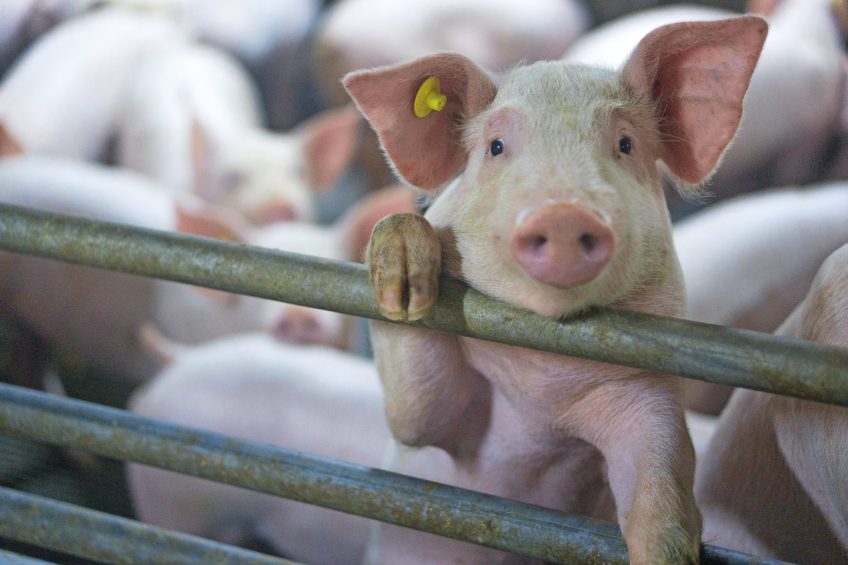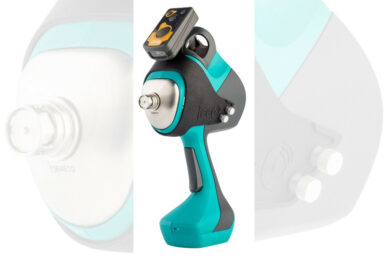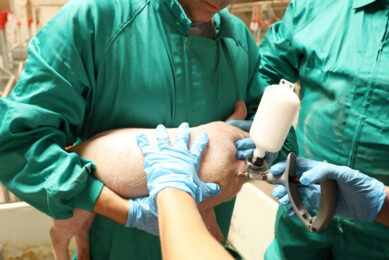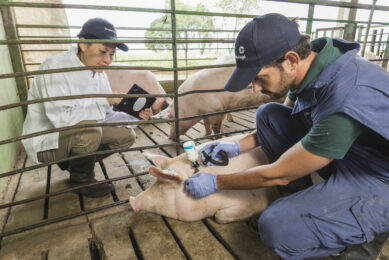Long lasting protection against PCV2 infections

Several years ago, Porcine Circovirus 2 (PCV2) was the swine business’ enemy number 1. Nowadays, the virus appears to be under control using decent vaccination. When doing so, it is good to keep in mind that subclinically, PCV2 can cause more damage than one might think.
Porcine Circovirus 2 (PCV2) has proven to be one of the most economically important pathogens in the global swine industry. Before PCV2 vaccines were available, PCV2 systemic diseases (PCV2-SD) had an enormous impact on the productivity on the most of pig farms. Currently, clinical forms of Porcine Circovirus Disease (PCVD) are the less common outcome of PCV2 infection and in most cases infected pigs have subclinical infections. Epidemiological models have shown that at farm level, the greatest proportion of negative economic impact is attributed to PCV2 subclinical pigs. Even if no evident clinical signs are seen, field evidence indicates that PCV2 vaccination is able to improve productive parameters (average daily gain, percentage of runts and carcass weight) in PCV2 subclinical infection scenarios.
While PCV2 infection is clearly a necessity and PCV2 is the only virus consistently recovered from PCV2-SD cases, other co-factors are required for inducing clinical PCVD. Several co-infections have been determined to be associated with the development of PCV2-SD such as PRRSv, SIV, M. hyo and others. Those are typically found in grow-finisher pigs.
Recent PCV2 epidemiological studies have described various prevalence patterns among different farms or batches of pigs. The peak of PCV2 positivity in sera or oral fluids can be reached as late as 16-21 weeks of age. Almost 50% pigs can still stay viraemic at 25 weeks of age in certain instances.
Duration of protection
That is why any efficient prevention with vaccination has to provide long-lasting protection in finishing pigs. Administering the vaccine Circovac (Ceva Animal Health) to piglets around weaning has been repeatedly confirmed to result in a long duration of immunity and has prevented pigs from PCVD and corresponding losses in various experimental and field conditions.
Figure 1 – PCV2 antibody level 19 weeks post-vaccination assessed by blocking ELISA.

In an experimental PCV2 challenge model, 3-week old piglets were either vaccinated or left unvaccinated as a control. At 22 weeks of age, all pigs were experimentally infected with PCV2b by intranasal inoculation. Vaccinated pigs had still a high amount of PCV2-specific antibodies at the time of challenge and were found to have statistically significant lower amounts of the viral DNA in blood, lymphoid tissue and faeces, after the artificial infection, see Figure 1 and Figure 2.
Figure 2 – PCV2 viraemia. Challenge on day 0.

Long protection in the farm condition
The duration of protection was assessed also in field conditions as well; that trial was performed on a farm that was affected by PCVD. In total, 548 piglets were vaccinated at 3 weeks of age and 557 piglets served as non-vaccinated control. Pigs were followed until 28 weeks of age. A high degree of natural challenge on the farm was confirmed by high viraemia >4log10 until 22 weeks of age in control pigs. Vaccinated pigs in the conventional farm had significantly lower amount of PCV2 DNA in the blood still at 24 weeks of age compared to the non-vaccinated controls, see Figure 3.
Figure 3 – PCV2 load in faeces. Challenge on day 0.

The performance data confirmed a strong impact on the PCV2 infections on the weight gain, particularly in the period of 13-21 weeks of age, when the improvements due to vaccination were the most significant. In this period the difference in the ADG reached almost 65g.
Figure 4 – PCV2 colonisation in lymph nodes by IHC 28 days post-challenge. The majority of vaccinated pigs had score 0 in the lymphoid tissue.

In production systems where pigs are growing until a weight above 150kg, the need for a durable protection is even higher. A trial was conducted on a 420 sow farrow-to-finish farm to investigate the efficacy of PCV2 prevention until 220 days of age. In total, 1,050 piglets were included. They were either non-vaccinated or vaccinated with Circovac at weaning. The performance data were collected in the periods between 25-105 days of life and 105-220 days of life. The vaccine appeared to be highly efficient in reducing losses due to PCV2 infections until the 220 days of life in the heavy weight pig production.
Figure 5 – Logarithmic mean values of PCV2 qPCR.

Late PCV2 infections
Although clinical PCV2 disease is a less damaging and less frequent event in current pig farms, the late PCV2 infections, expressed particularly in subclinical forms in late finishing periods still represent a high risk for the overall performance. Prevention of potential losses due to PCV2 vaccination is a permanent task within the health control programmes. The vaccine Circovac demonstrated a great ability to fulfil the needs for a potent vaccine with the long lasting efficacy.
References available on request.











